| Author |
Message |
|
Howard Waddell
Industry Professional
|
 Posted: Wed 05 Dec, 2012 8:46 am Post subject: Sneak Preview of the new Museum Line Ljubljana Posted: Wed 05 Dec, 2012 8:46 am Post subject: Sneak Preview of the new Museum Line Ljubljana |
 |
|
Albion and our partner, the National Museum of Slovenia, will be unveiling a recreation of Sword N4516, which we will be calling "The Ljubljana" ( a pronunciation guide can be found here: http://www.merriam-webster.com/cgi-bin/audio....jubljana), at a new exhibit on arms and armour opening at the Museum on December 12, 2012 - "Knight, Lady and the Dragon".
The Museum exhibit information can be found here:
http://translate.googleusercontent.com/transl...RoN9_FW5WQ

Peter has exhaustively documented this masterpiece of the swordsmithing art and we have pulled out all of the stops to recreate this sword in time for the exhibit, where it will be displayed along with the original.
This sword has been discussed here on myArmoury:
http://www.myArmoury.com/talk/viewtopic.php?t...mp;start=0
And other swords with the "Unicorn and Sword" marks were discussed here:
http://myArmoury.com/talk/viewtopic.php?t=166...fab25ee41c
Joe Waites and Eric Meulemans outdid themselves on this one, not only getting the two swords completed on time to ship to the Museum, but also in the quality of work they did in meeting Peter's specifications so exactly.
Here are some photos of the original sword and of the recreation in process:
http://www.facebook.com/media/set/?set=a.1015...amp;type=1
We will be putting up a page on the Albion site, with more information from Peter and the Museum over the next few weeks. The sword will go into regular production early next year, but copies can be reserved now at a special introductory price of $2,800.
Best,
Howy
Albion
Albion Swords Ltd
http://albion-swords.com
http://filmswords.com
|
|
   |
 |
Craig Peters

|
 Posted: Wed 05 Dec, 2012 8:54 am Post subject: Posted: Wed 05 Dec, 2012 8:54 am Post subject: |
 |
|
|
This is a beautiful sword, with subtle and yet elegant lines and features. I can imagine from the hollow grind seen on the original blade that this must be a very lively sword in hand. Looks like another winner from Albion and Peter Johnsson.
|
|
  |
 |
Chad Arnow
myArmoury Team


|
 Posted: Wed 05 Dec, 2012 9:47 am Post subject: Posted: Wed 05 Dec, 2012 9:47 am Post subject: |
 |
|
Absolutely beautiful. One of the Facebook pics shows the inlay recreated. Will this be a feature of the production version?

ChadA
http://chadarnow.com/
|
|
    |
 |
|
Tim Lison
|
 Posted: Wed 05 Dec, 2012 9:51 am Post subject: Posted: Wed 05 Dec, 2012 9:51 am Post subject: |
 |
|
|
Now THAT is a gorgeous sword! Well done Peter and Albion. The level of detail is really impressive. I like the inlay on the recreation, will it be present on the swords for sale or is it special for the museum?
|
|
  |
 |
|
Howard Waddell
Industry Professional
|
 Posted: Wed 05 Dec, 2012 9:57 am Post subject: Posted: Wed 05 Dec, 2012 9:57 am Post subject: |
 |
|
| Tim Lison wrote: | | Now THAT is a gorgeous sword! Well done Peter and Albion. The level of detail is really impressive. I like the inlay on the recreation, will it be present on the swords for sale or is it special for the museum? |
Thanks!
Yes, we will be doing the inlay on the Museum Line versions as well. We will be trying some other techniques to achieve that, for this and other swords in development.
best,
Howy
Albion Swords Ltd
http://albion-swords.com
http://filmswords.com
|
|
   |
 |
Blaz Berlec

|
|
   |
 |
William M

|
 Posted: Thu 06 Dec, 2012 12:54 am Post subject: Posted: Thu 06 Dec, 2012 12:54 am Post subject: |
 |
|
Awesome! Something to pull my attentions away from the Cluny sword. For me the Cluny has a nicer grip but this has a more interesting blade. Hmm, perhaps they will find an original sword, which featured a bit of both! 
Anyways well done Albion! I really am impressed by the Museum line and for me is what sets Albion apart.
|
|
   |
 |
|
Peter Johnsson
Industry Professional
|
 Posted: Thu 06 Dec, 2012 1:42 am Post subject: Posted: Thu 06 Dec, 2012 1:42 am Post subject: |
 |
|
It is exiting to see the Ljubljana sword recreated as a Museum Line sword.
Eric and Joe has done an outstanding job bringing this sword back to life.
Søren was contacted by Tomaz Lazar of the National Museum of Slovenia during the planning stages of their exhibiton on chivalry: The Knight, the Lady and the Dragon. The task was to make a close replica of one of the swords in their collection to show the splendor of the medieval sword as it would have been when new.
I was very happy to learn that the sword chosen for this project was the N4516: a blade I had had great interest in ever since I learned about it here at myArmoury back in 2009, in a post by Blaz Berlec. -Thanks Blaz! :-)
The situation was favorable, since there was an exhibition from the National Museum of Slovenia on loan to the Army Museum in Stockholm, with finds from the River Ljubljanica. The conditions for preservation in this river are very good: there is an incredible amount of finds of swords in great condition from the bronze age and onwards.
In January this year the exhibit was ended and the objects removed from their displays. I was allowed an opportunity to document several highly interesting swords during two whole days, as the items were carefully packed away for transport back home to Slovenia. The crew from the museum was very professional, efficient and friendly. I could focus completely on documentation and there were always someone with specialized knowledge about the finds, their origin, history, metallurgy and conservation at hand that could answer any questions. I am grateful for this opportunity to learn directly from the objects and professionals in the field.
I only wish there had been time to study more of the pieces, but I could make good use of the time available and came away with half a dozen swords documented.
The n4516 was the main focus of study, of course.
I was curious to learn from direct impression what this sword was like. It is one of those really good ones. You can tell it was made by some of the best craftsmen of its day. There is an economy in form and expression that does not take away anything of its power of presence. Rather it makes its character come out even stronger. The shape is stark and graceful with something very essential about it. It is close to the ideal idea of what a sword of this kind should be.
"Visible things derive from the invisible" was said by Odo (c. 1116 - 1161), the Abbot of Morimond and an early Cistercian. There is a strong influence of Christian Platonist philosophy in medieval aesthetic ideals. An important part of work was to bring its completeness as close as possible to this invisible ideal origin.
Important works of art and architecture were designed based on geometric structures. Geometry was nothing less than the rational rules that the creator Himself followed in the making of Creation.
The practical use of geometric drawing was a method in many crafts to varying levels. Most famous for their ingenious use of geometry are the architects of the great Abbeys and Cathedrals, but also goldsmiths and painters are known to have used geometry when planning work and establishing its proportions.
My hypothesis is that it was also an important part of the craft of sword making. If it is possible to rediscover how this was done and unlock the secrets of the old masters, we will learn something new and important about medieval swords.
Geometrical drawing was simply a handy and practical way of working in an age that lacked standardized units of measurement and pre-fabricated bar stock. Every craftsman had to be able to set down the basic fundament himself: establishing true angles and correct proportions. This was done with the help of a compass and a straight edge. Theophilus tells us how to lay out a design on a chalked plank with straight edge and a compass with a point of tin or lead.
Number and geometry was also charged with symbolic meaning ("The search for the inner meaning of things was a medieval habit", says Nigel Hiscock: The Symbol at Your Door, 2007). We cannot know how important the symbolic meaning was in each individual case of course, and we must be careful about how much we read into these things. It would probably have varied over time and between individuals. But we cannot overlook the fact that symbolic meaning did play a big role in how reality was perceived by the medieval mind.
The goldsmith Hanns Schmuttermeyer writes in the foreword to his handbook in geometric drawing (published in the 1480´s): "(I wrote this) ... for the edification and instruction of our fellowmen and all masters and journeymen who use this high and liberal art of geometry, (so that) their feeling, speculation, and imagining can be better subjected, after memorization, to the true basis of measured work." And: "(this art) ...is now pursued with precision, subtlety, higher understanding, and deeper reckoning.”
With the drawing of the n4516 rolled up under my arm I was eager to come home to see if a geometric structure may have been the basis for its proportions. Not all swords have clear geometric ratios for their proportions.
This one turned out to be a very interesting example, but a difficult nut to crack. When there is a finished analysis that define all the parts, the solution seems obvious. But it is not always easy or even possible to find this simple solution. Geometry can be made to "explain" almost any form, but it is not always possible to do this in the simple and elegant way you see in the work of medieval engineers and artisans.
The Ljubljana does indeem seem to have been designed according to a geometric system. In previous threads here at myArmoury the proportions of this sword have already been discussed. It was proposed by Buno Giordan that the golden section is the basis for its shape (in this thread: www.myArmoury.com/talk/viewtopic.php?t=3592&a...;start=0). The analysis is elegant, but when I had an exact drawing with measurements I could not find this solution to fit the sword within tolerances that were convincing. (-And I had really hoped to be able to confirm this as it would have been great to see yet another fine example of the principle of the golden section in use in medieval work!)
The search was now to see if I could find principles of design that could have been established with compass and straight edge and not a pocket calculator.
I think that this seeming closeness with the golden section is a side effect of a different method that has much in common with the geometric structures that were used in the planning of great cathedrals. Geometry was a "free and liberal art" but this did not mean there were no rules involved. When we look at preserved architectural plans we can see how certain stratagems and methods were commonly used to establish harmonious proportions, "so that out of all the parts (...) there emerges one single wholeness of things" in the words of Augustinus.
The octagon, the vesica and the progressive scaling of rotated and inscribed squares are among the most common geometric elements found in architectural drawings of the Gothic period. For an analysis to be valid it has to describe both the overall and be able to define the details, with an economy of elements, since this is what we see in surviving medieval geometric designs.
There will be an article with my analysis of the proportions of the n4516 published on the website of the National Museum of Slovenia when the exhibition has opened. After this I can show and discuss some of the details and ideas behind it here at myArmoury.
Sorry for this very long post. This sword has a very interesting story to tell and it is well worth to get to know it. I have not yet even touched upon its handling characteristics! It is superb in handling, but more on that later :-)
|
|
   |
 |
|
Keith L. Rogers
|
 Posted: Thu 06 Dec, 2012 10:10 am Post subject: Posted: Thu 06 Dec, 2012 10:10 am Post subject: |
 |
|
|
Wow, Peter. Thanks for taking the time to write that post. Very informative. Is there a projected date for the opening of the exhibition? I'm curious as to what is in your article that gets released with the opening.
|
|
  |
 |
|
Søren Niedziella
|
 Posted: Mon 10 Dec, 2012 12:23 pm Post subject: Museum Line Ljubljana pictures Posted: Mon 10 Dec, 2012 12:23 pm Post subject: Museum Line Ljubljana pictures |
 |
|
The first Museum Line Ljubljana has visited my photographer - and has travelled on to the museum. Here are a couple of the photos. More photos (high res) can be found on albion europe's flickr page:
http://www.flickr.com/photos/albioneurope/sets/72157632214313808/
 Attachment: 142.09 KB Attachment: 142.09 KB
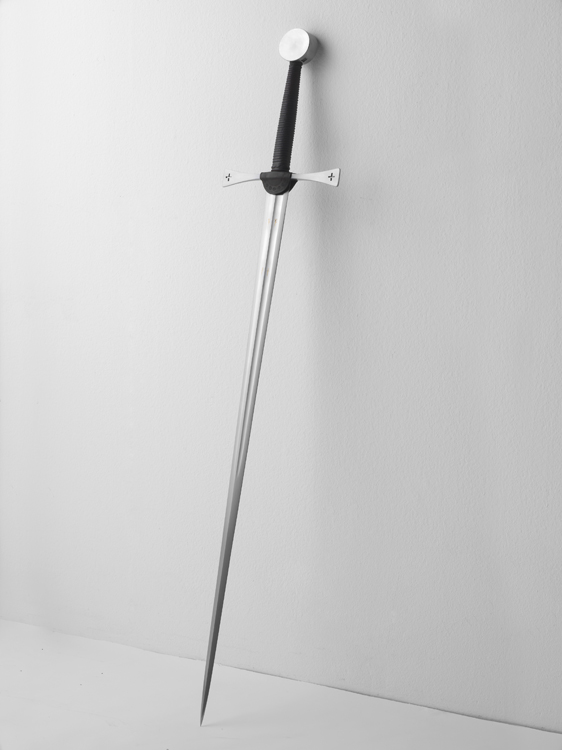
 Attachment: 66.66 KB Attachment: 66.66 KB
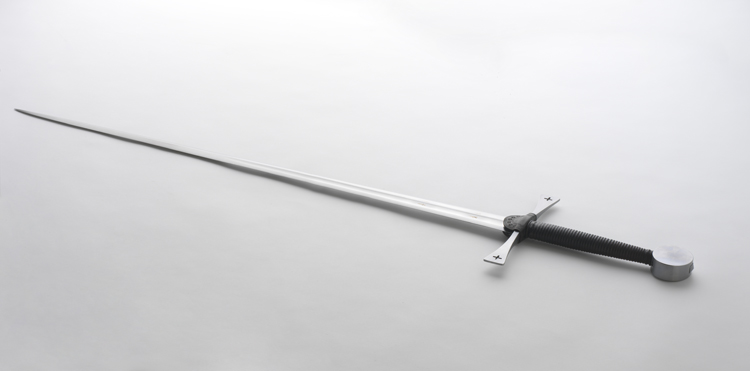
Søren Niedziella
|
|
  |
 |
|
Søren Niedziella
|
 Posted: Mon 10 Dec, 2012 12:26 pm Post subject: Posted: Mon 10 Dec, 2012 12:26 pm Post subject: |
 |
|
Just two more - to see some of the amazing details on the leather work and the blade....
 Attachment: 157.95 KB Attachment: 157.95 KB
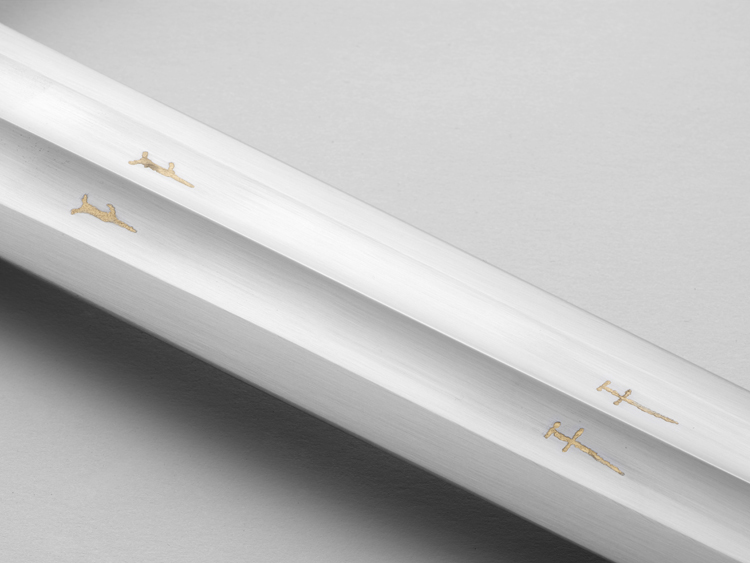
 Attachment: 135.58 KB Attachment: 135.58 KB
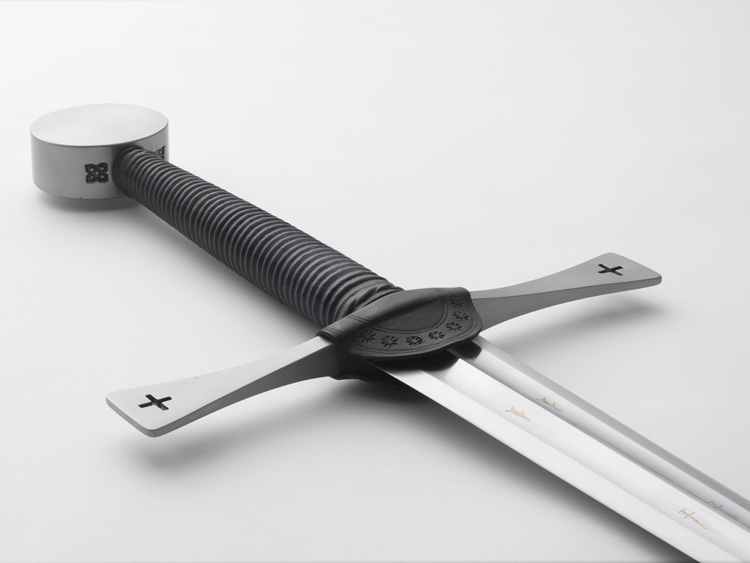
Søren Niedziella
|
|
  |
 |
|
Adam Bohnstengel
|
 Posted: Wed 12 Dec, 2012 11:53 pm Post subject: Posted: Wed 12 Dec, 2012 11:53 pm Post subject: |
 |
|
That is a beautiful sword! I had no idea Slovenia had stuff like this lying around. I spent a year in Ljublana and married a Slovene girl, and somehow I missed it. Next time we visit her parents, I will have to stop by and visit the museum.
Maybe I can get Jerica to let me buy a copy to remind her of home.......
Violence is the supreme authority from which all other authority is derived.
|
|
  |
 |
|
Peter Johnsson
Industry Professional
|
 Posted: Wed 12 Dec, 2012 11:57 pm Post subject: Posted: Wed 12 Dec, 2012 11:57 pm Post subject: |
 |
|
Adam, the exhibit is on for a year and opened yesterday, so maybe you will be able to visit in time to see the Albion reconstruction side by side with the original?
Personally, I really would like to go. I have friends who have visited Slovenia and have been told it is beautiful.
|
|
   |
 |
Jean Thibodeau

|
 Posted: Thu 13 Dec, 2012 3:45 am Post subject: Posted: Thu 13 Dec, 2012 3:45 am Post subject: |
 |
|
Very impressive sword and I really like the double fullers: These where not obviously double fullers in the previous pics and the angled pic showing the thinning of the guard towards the ends makes it look very " mass efficient " i.e. robust by no extra thickness where it isn't needed.
Just from looks alone I'm guessing a very fast and agile sword and a very good addition to the Albion Museum line.
You can easily give up your freedom. You have to fight hard to get it back!
|
|
  |
 |
|
Peter Johnsson
Industry Professional
|
 Posted: Thu 13 Dec, 2012 6:05 am Post subject: Posted: Thu 13 Dec, 2012 6:05 am Post subject: |
 |
|
Yes, this sword is agile and manoeuvrable, but also a pretty hefty and powerful weapon.
It is interesting to compare it to the Cluny sword, for example. Both can be classified as XVa swords even if the Ljubljana is not the most clear example of the type.
The Cluny is longer in the blade but a much lighter sword. Even if both weapons are made for thrusting, the Ljubljana has a heft that makes it effective also in blows. The Ljubljana has the feel of a serious sword of war: an aggressive weapon made for the battle field.
The Cluny longsword has perhaps more of a civilian feel to it (even if weapons like this are depicted in artwork with military saints and men at arms). It handles almost like a rapier made for one and a half hand usage, if such an animal can be imagined.
Illustration below show both swords to the same scale, with dynamic properties marked out.
 Attachment: 32.97 KB Attachment: 32.97 KB
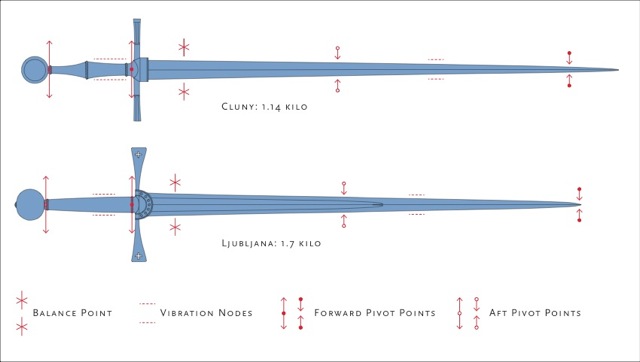
Last edited by Peter Johnsson on Thu 13 Dec, 2012 6:11 am; edited 1 time in total
|
|
   |
 |
Robin Smith

|
 Posted: Thu 13 Dec, 2012 6:11 am Post subject: Posted: Thu 13 Dec, 2012 6:11 am Post subject: |
 |
|
Awesome... Beautiful work.
I am really interested to see how Albion handles the inlay on the Museum Line swords. I am fascinated by inlay and my recent collecting efforts have been on swords with inlay.
A furore Normannorum libera nos, Domine
|
|
   |
 |
|
Peter Johnsson
Industry Professional
|
 Posted: Thu 13 Dec, 2012 6:23 am Post subject: Posted: Thu 13 Dec, 2012 6:23 am Post subject: |
 |
|
Hi Robin,
The inlay is made by first etching and then gilding.
On close inspection you may detect difference to the look of solid wire inlay: the gilding is not exposed on the surface level of the blade, but put ever so slightly sunken below.
This is a difference to wire inlay that is flush with the surface, but this also protects the gilding.
The benefit with this method is that it is possible to get very close to the precise form of the original markings *every time* and that it can be done on blades manufactured by milling and grinding.
I have made drawings of the markings on the original blade and taken care to reproduce them in detail and exact scale.
I think this method of etching and gilding it is a very good substitute to wire inlay. Having the marks of the original in the blade like this elevates the whole weapon. A touch of color and that deeper meaning that signs and symbols bring.
-It is something w shall explore further in coming projects.
|
|
   |
 |
Blaz Berlec

|
 Posted: Thu 13 Dec, 2012 8:31 am Post subject: Posted: Thu 13 Dec, 2012 8:31 am Post subject: |
 |
|
Yesterday 12. 12. 2012 at 12 o'clock (and at -12 degrees C) was the opening of exhibition Vitez, Dama in Zmaj (Knight, Lady and the Dragon) in National Museum of Slovenia in Ljubljana. I'm posting some photos here since the Albion's sword "Ljubljana" was one of the highlights of the opening.

Authors of the exhibition, Tomaz Lazar on left and Tomaz Nabergoj on the right holding the ribbon, and Peter Stih (their superior in Museum hierarchy, I presume) "cutting" the ribbon at the opening. Not really cutting, since the Museum copy of "Ljubljana" isn't sharp, for safety reasons.
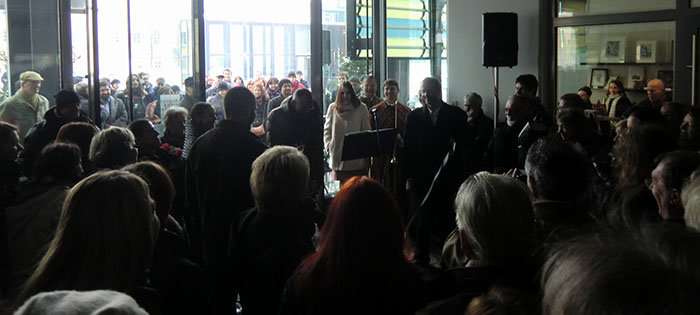
Lobby of the new building of National Museum was waaay to small for all the visitors, even though it was at very inconvenient hour (most people have to be at work at 12 on Wednesday ).
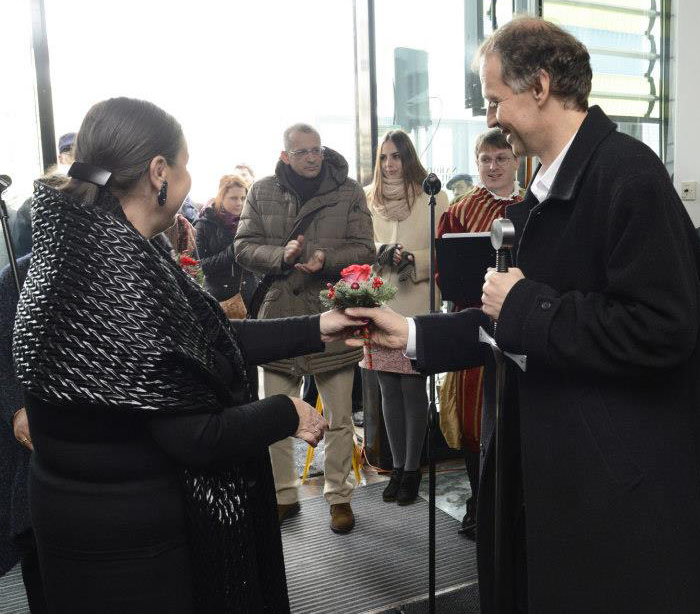
Tomaz Nabergoj with "Ljubljana".

Members of our re-enactment group considering theft of "A 79" armour, loan from Austria, Kunsthistorisches Museum, armour of Emperor Maximillian I. by Lorenz Helmschmied.
Sorry for less than optimal pictures, they aren't mine (1 and 3 posted by National Museum of Slovenia). I didn't have the opportunity to handle the sword, authors of exhibition were too busy for the whole time. The exhibition isn't completely finished yet, but it will be in a couple of days. Can't wait to spend a bit more time in there.
Extant 15th Century German Gothic Armour
Extant 15th century Milanese armour
Arming doublet of the 15th century
|
|
   |
 |
J.D. Crawford

|
 Posted: Thu 13 Dec, 2012 5:46 pm Post subject: Posted: Thu 13 Dec, 2012 5:46 pm Post subject: |
 |
|
|
That's an amazing sword and a great addition to Albion's Museum line. If I recall right, the blade on the original is a full 1CM thick close the cross. It must be very stiff. A real 'dragon slayer'.
|
|
   |
 |
|
Scott Woodruff
|
 Posted: Thu 13 Dec, 2012 10:40 pm Post subject: Posted: Thu 13 Dec, 2012 10:40 pm Post subject: |
 |
|
Thank you so much Peter for the illustration of the pivot points. I would almost kill to have such a graph showing such info for all of Albions offerings. I find it interesting that the FPP on the Cluny is a bit behind the point while that of the Ljubjana is right at the point. Perhaps the lighter blade of the Cluny does not need such precise placement of the FPP to maintain excellent tip control?
I am curious, does it take multiple etchings to get the marks deep enough or are you able to get it all in one go?
|
|
  |
 |
|
|

